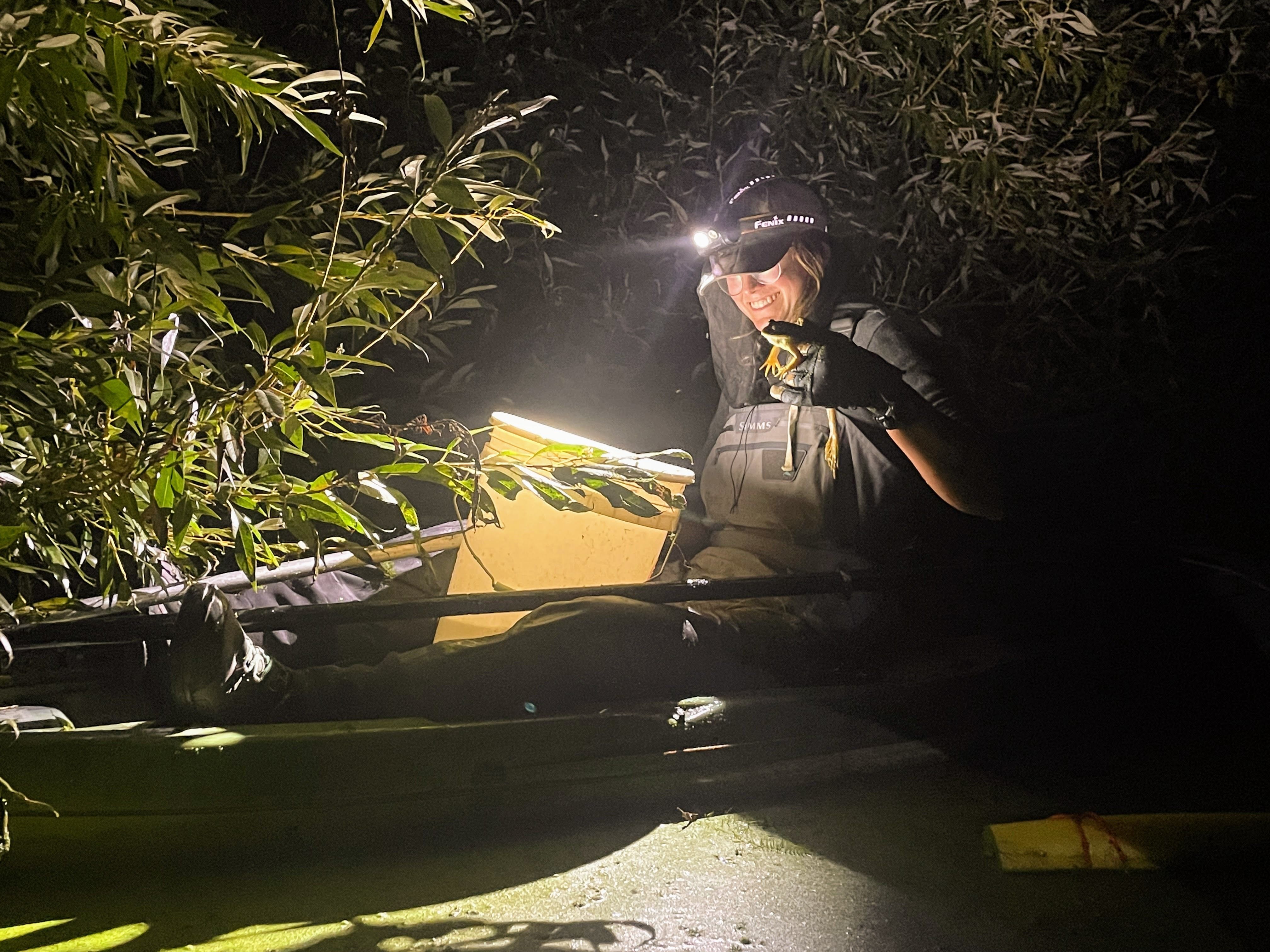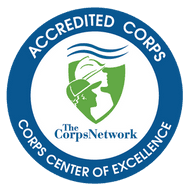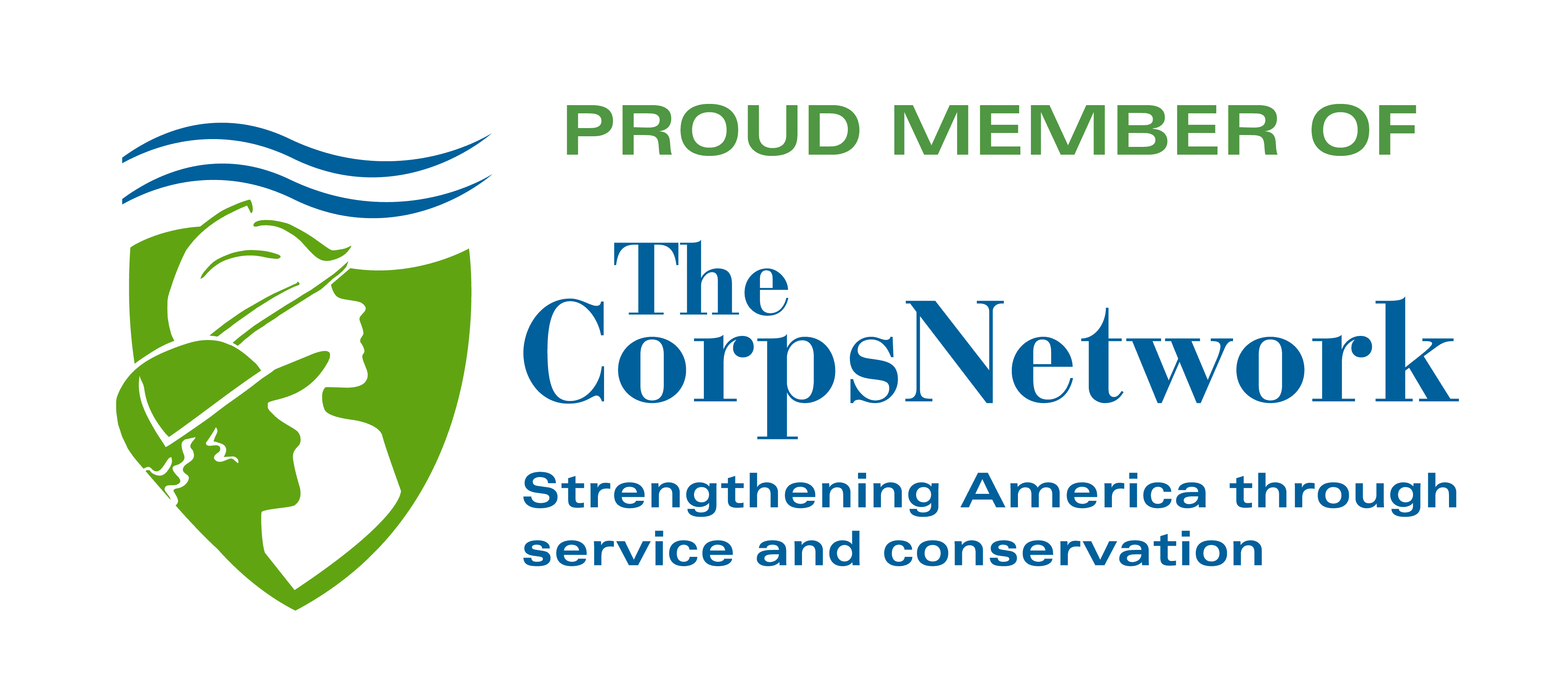
It’s 2 am. You’re floating in a kayak on a pristine pond and the sky is a canopy of glittering stars above you. Everything is quiet except for the quiet lap of water against your boat and the occasional ripple of a fish or turtle. Suddenly, you hear it. “Waaah-ohh…” “Waaah-ohh…” Was that a bullfrog? You pause in wait, sweeping your headlamp around to catch its eyes to stun it. There! With a quick “Swooosh”... “SPLASH!”... “Squelchhh” you’ve got it on your gig pole. You’ve just caught yourself an invasive North American bullfrog and brought this area one step closer to full eradication of these amphibian invaders.
This was a common routine of Haylee and Josh, two of MCC’s Conservation Fellows corps members who served with the Confederated Salish Kootenai Tribe (CSKT) in the Mission Valley this past summer. Their mission, along with two other Fellows, was to continue work to eradicate the invasive bullfrog through a combination of netting baby tadpoles, capturing adults, acoustic surveys, and community outreach and education.
The Mission Valley is a particularly important area of amphibian conservation because it’s a valuable habitat for native amphibians. Torrey Ritter, Wildlife Biologist with Montana FWP, explains, “Bullfrogs are extremely invasive. They can take over an entire wetland and become the only amphibian species present. This results in the predation and displacement of native amphibians. Bullfrogs also eat lots of other critters including reptiles, baby birds, and invertebrates. In short, they just plain take over.”
For budding wildlife biologists like Haylee and Josh, working on a project like this is the perfect way to get their foot in the door. “Being responsible for managing their own time and developing work plans is an important component of personal development. Often, the first job that young professionals have where they have this level of independence ends up being very influential in their professional development,” FWP wildlife biologist Torrey stated. “I got tons of field experience with wildlife. In wildlife biology, experience is everything,” Josh raved. Haylee, who is in the midst of a career transition, remarked, “This was my first hands-on experience in wildlife. I learned so much from GIS, surveying, and quantifying data. I also got an awesome reference from [our supervisor] Art and gained professional networking connections. It’s my first big step in my dream career in wildlife biology.”
Engaged host-site supervisors, like CSKT wildlife biologist Art Stoukka, really take the MCC fellowship experience to the next level. “I cannot sing his praises enough. He was really good at allowing us to explore and participate in other things besides bullfrog work. He was understanding and cognizant of how valuable those experiences are for young professionals. He constantly asked us if we wanted to help with various projects with CSKT and we’d help out wherever we could,” Josh shared. Haylee also appreciated the opportunity to build diverse skills, “We got a lot of other experiences out of it: surveying for Eurasian milfoil, leopard frogs, and lizards. He helped all of us have a well-rounded field season and dig our toes in other wildlife avenues.”
Haylee and Josh didn’t just gain professional experience this summer; they also discovered their inner strength and independence. Haylee shared, “I learned I'm a lot stronger and braver than I thought previously. As my first time away from home, I learned to find my independence and thrive professionally. I learned I can do hard things.” Josh felt the isolation from living in such a remote area but realized it allowed him uninterrupted time to sort out his career goals. “It gave me a lot more time to introspect and figure out what I wanted to do next. Having this space where the only responsibility was myself really gave me the freedom to explore that,” he said. Both Josh and Haylee appreciated the support that MCC provided. Josh added, “It was really nice having MCC on speed dial if anything was going wrong. Especially since I didn’t know anyone else in Montana, it made it so that I had some kind of connection.”
Beyond the additional member support, partners and grantors also appreciate partnering with MCC to bolster their organizational capacity. Liz Lodman, an Administrator with the Montana Invasive Species Council, remarked, “This partnership with MCC provides us with a young and energetic workforce to do short-term projects and provides them with hands-on work in natural resource fields.” Torrey remarked on how hiring for federal positions, like at Montana FWP, can be complicated and cumbersome. “By partnering with MCC, we can address conservation needs like the bullfrog project quickly, efficiently, and cost-effectively,” he said.
With MCC, CSKT, and FWP working together, the future of eradicating these invasive bullfrogs looks promising. Liz reflected on the effort, “This project has shown great improvement in bullfrog mapping and removal over the last 3 years. A lot has been learned about capturing tadpoles and bullfrogs.” Haylee also expressed hope about the work ahead, “I think if MCC, FWP, and CSKT keep the ball rolling they could have a huge impact. The numbers from 2021 to 2022 were astronomical. This year we were able to do even more and cover a much wider area. There’s a potential for eradication. Nowhere else in the country have we heard of them being eradicated,” Haylee said. Josh is excited that this project might encourage other US states to follow suit. “Right now there are a couple of states that consider them endemic. But they haven’t been established that long. This project specifically is like a pilot project in a way. It’s nice to be a part of a project that is doing well,” he said. Liz echoed that optimism, “Seeing the MCC crew in action gave me hope that we can suppress bullfrog expansion."
As Haylee and Josh’s time on this project comes to a close, they’re both excited to take the next steps in their careers. Josh, felt affirmed in his career direction, “After this experience, it really reinforced that I want to go into wildlife conservation and wildlife work specifically,” he said. Meanwhile, Haylee has already accepted a job in wildlife conservation. “I just moved to New Mexico for a position with US Fish and Wildlife. If you told me that a month ago, I wouldn't have believed you! MCC really paved the way for accepting this position,” she said. After a summer as a Conservation Fellow with MCC, they’re now equipped with a toolbox of finely tuned skills, professional references, and self-confidence, ready to take on the world of wildlife biology.

![[Image Description: Two MCC members are walking away on a rocky trail, carrying their packs, surrounded by burnt orange bushes. Through the haze in the background, there are a multitude of mountains, overlapping one another.]](https://cdn.firespring.com/images/7ba12407-5e3a-41c1-b4b4-f00aac9d37a1.jpg)




